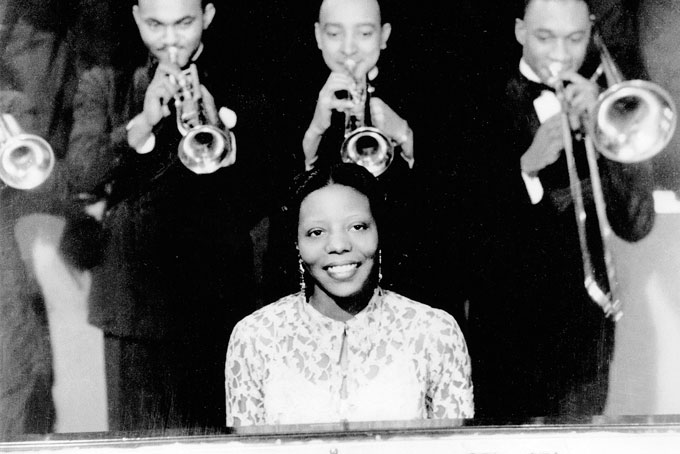CRAWFORD GRILL NO. 2, in 1975, from the McBride Sign Company Photographs, Detre Library & Archives, Heinz History Center.
When most think of jazz music, they might picture New Orleans’ French Quarter, the streets and jazz bars of 20th-century Harlem, and Greenwich Village in New York City. However, jazz music — perhaps the most genuine American art form — has a long and rich history in Pittsburgh.
Since the 1920s, pioneering artists who grew up in the steel city or participated in the city’s jazz scene have profoundly influenced the genre’s sound and direction. The same artistic spirit that drove that culture and innovation thrives in the city today. There are still many venues where Pittsburgh residents and visitors can enjoy live jazz music and the culture surrounding it.
Jazz History in The Hill District
The jazz scene was so hot in Pittsburgh’s Hill District during the 1930s through the 1950s that the neighborhood became referred to as “Little Harlem.” The Hill District was a thriving African American neighborhood–which managed to succeed economically. It became a vibrant cultural center despite the numerous political and societal obstacles Black people during that time faced.
The Crawford Grill became the center of the neighborhood’s jazz scene. It hosted artists and patrons of any race or ethnicity. The joining of creative forces during performances and jams at The Crawford Grill and in the Hill District at large resulted in the creation of the BeBop style — perhaps the most quintessential and recognizable sub-genre of the jazz art form. Hard Bop and Vocalese also found their roots in this Pittsburgh neighborhood.
Familiar Faces
 https://newpittsburghcourier.com/wp-content/uploads/sites/3/2015/07/mlwandykirkbandphotocreditfrankdriggscollection-600x401.jpg 600w" sizes="(max-width: 680px) 100vw, 680px" />
https://newpittsburghcourier.com/wp-content/uploads/sites/3/2015/07/mlwandykirkbandphotocreditfrankdriggscollection-600x401.jpg 600w" sizes="(max-width: 680px) 100vw, 680px" />
Many lauded jazz characters grew up in Pittsburgh or participated heavily in its jazz scene. Mary Lou Williams, Ahmad Jamal, and Erroll Garner were all raised in Pittsburgh. Jazz royalty like Ella Fitzgerald, Louis Armstrong, Dizzy Gillespie, Miles Davis, and Stanley Turrentine all played regularly at the Crawford Grill.
Jazz Today
From the BeBop that was born here to modern developments in the genre, Pittsburgh’s jazz scene is still flourishing, and there are many places you can go to immerse yourself in this music and culture.
With two locations, one downtown and one up on Ellsworth, Con Alma (meaning “with soul”) serves artisan food and drink and showcases local jazz talent live every day of the week. For some extra flair, check them out on Sundays for some Latin jazz and south-of-the-border-inspired cuisine.
For a more formal and music-focused experience, MCG Jazz has been performing jazz concerts since 1987. They offer a subscription series for patrons to see emerging artists and seasoned jazz legends in their 350-seat concert hall. Additionally, they support the local jazz community through an in-house record label and by hosting educational programs for K-12 students. This upcoming season at MCG Jazz, see musicians like Dianne Reeves, Arturo Sandoval, and more.
The sprawling and layered jazz scene throughout the city culminates once a year with the Pittsburgh International Jazz Festival every September. Jazz emerges from the city’s bars and clubs and takes over the entirety of downtown. Live music is heard at the Highmark Stadium and on street corners throughout town. Last year’s lineup featured world-renowned musicians like Ron Carter, Stanley Clarke, and other local favorites.
There are many other downtown locations and throughout the Pittsburgh metro area where you can go to experience this city’s rich jazz scene. Moreover, you can experience the effect of this genre’s history on the city by simply walking around and interacting with the community.
You need to be a member of Pittsburgh Jazz Network to add comments!
Join Pittsburgh Jazz Network